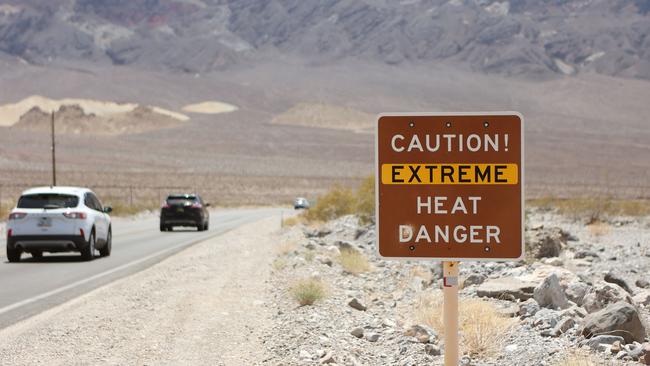How the climate changed: from the watercooler to a hot topic
‘If Europe is this hot, how bad will our summer be?’ Heard that a bit lately. Previously safe discussions are beginning to feel consequential.

Talking about the weather is supposed to be a safe subject. Inane, perhaps, but inconsequential. Talking about other people’s weather is even safer. Like musing over travel guides or reading history. Lately, however, it’s beginning to feel consequential.
If Europe is this hot, how bad will our summer be? Heard that a bit lately. Death Valley got to 53C … that’s deathly, right? It didn’t help when the Europeans started naming their heatwaves after mythological keepers of hell. First Cerberus, then Charon. Lucifer is on the wait list, no doubt.
This is a turnaround for us. Usually it’s our summers that fill the sign-offs on broadcast TV overseas. It’s our fires, our droughts, our heatwaves, storm waves and sandstorms that capture the broadcast sign-offs, not to mention our sharks, crocodiles, snakes and spiders. We’re the country of dusty trails, pancake dams and guns that only sight snakes and dying sheep.
Now we’re the ones watching in trepidation. If this is the year of global temperature records, what will our summer bring? We have thick vegetation growth from three years of rain, ready to dry out and ignite. We have cleaned out mould but perhaps not the gutters. We have finally sorted gumboots but the SP cream is out of date. It’s time to plan for Lucifer’s arrival.
A friend says he has decided to install airconditioning in the areas of the house that had been left au natural in cooler times – guest rooms mainly. Another is planning a renovated kitchen and will now commit to insulated windows, partly for winter warming, mostly for summer shielding.
We have been looking at our house with defence in mind. An awning on the west side is now a must. A roof over the verandah seems like a sensible idea and the wall of glass on the north side – built for winter sun and benign summer nights might now have to be cloaked in curtains. All we need is bonnets and bustles and we’ll be very 18th-century Australia.
The garden will have to be rethought. The hydrangeas that survived past summers with dribbles from the hose and sometimes an old sheet tossed over them will be moved. The grass will be left to brown off, the hedges will be allowed to grow tall and the only annuals that will be saved are those that can shelter in the bathroom.
In the country, word is that you must slash the long grass around homes early and often. By the time the heat arrives, it’s too late to manage ground cover. Some are destocking their older livestock, investing in feed before the prices rise, planting for a hotter season, re-reading that Dorothea Mackellar poem.
Apocalyptic imaginings are best business practice in the country. Less so the city. One friend thinks these plans to heat-proof the house are more anxiety than sensible. It may not happen this year, or the next, he says. But, I reply, it will come and it might be time to start planning for it.
This may be the answer to that ineffable problem of climate change. The effort of imagining a world with a very different climate has been a challenge, both for our imagination and our decision-making. This has changed that. This is a taster of the future.
In the third week of the northern hemisphere heatwave, a CNN anchor said “It’s seemingly inescapable”. We have seen it on the news, we have seen blood red on weather maps and, more poetically, we now have words for the emotional resonance of it. The horrors of mythology, the characters of a hellish existence have entered our lexicon. Hades is in sight.
Macken.deirdre@gmail.com







To join the conversation, please log in. Don't have an account? Register
Join the conversation, you are commenting as Logout